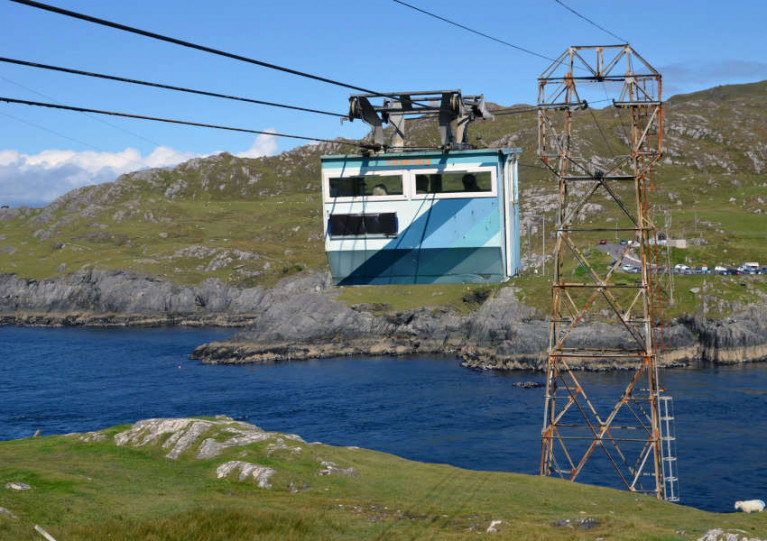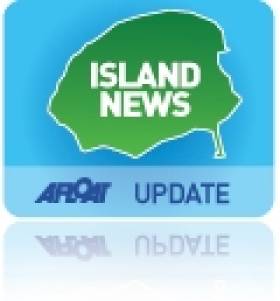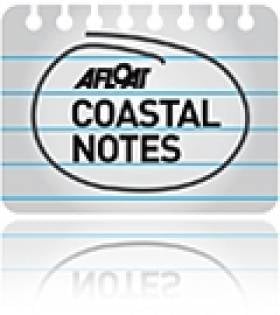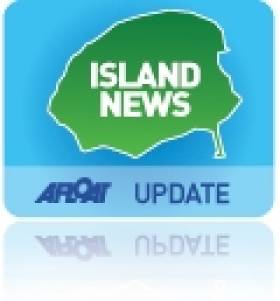Displaying items by tag: Dursey Island
Local Farmers Decry Failure to Provide Timely Replacement Ferry for Suspended Dursey Island Cable Car
Farming representatives have shared their dismay at the failure to provide a ferry service to replace the suspended cable car to Dursey Island.
As previously reported on Afloat.ie, funding for a temporary ferry service was agreed by the Department of Rural & Community Development in recent days and Co Cork Mayor Gillian Coughlan confirmed that a procurement process is now under way.
But the Irish Farmers’ Association said local farmers are feeling “particularly disappointed that the service wasn’t put in place in time”, according to RTÉ News.
The suspension of the cable car from yesterday (1 April) until November for urgent maintenance was announced in early February.
“This will be very disruptive for farmers who have cows and ewes on Dursey Island, and who depend on a service to get them across to check on their livestock at this crucial time in the farming calendar,” West Cork IFA chair Donal O’Donovan said.
RTÉ News has more on the story HERE.
Temporary Ferry Service for Dursey Island
The Cork County Mayor says the Department of Rural & Community Development has agreed to provide funding for the introduction of a temporary ferry service to Dursey Island to replace the cable car operation which will cease tomorrow for repair work.
Mayor Gillian Coughlan announced today that Cork County Council will undertake a procurement process to provide the ferry service.
"It is the intention of the Council and the Department to put this service in place as soon as possible."
RTÉ News reports on West Cork farmers’ dismay at the decision to reduce the operating hours of the cable car link to Dursey Island where they graze their livestock.
The winter schedule, which sees the service shut down at 4.30pm daily, usually ends at the beginning of March but has been extended by Cork County Council amid the continued national Level 5 lockdown.
However, mainland farmers argue that the reduced service leaves them little time to manage their animals ahead of the calving and lambing season.
RTÉ News has more on the story HERE.
The West Cork Islands of Bere, Dursey, Garnish, Heir, Long, Cape Clear, Sherkin and Whiddy are inviting visitors to 'explore the islands, experience island life' in a special island festival in June.
The idea behind the celebration from June 15 and 16 is to encourage visitors to see what life on an island is like. The island communities are saying 'be an islander for the weekend'. Enjoy reduced rates on ferries/cable car activities, services and accommodation. Jump on a ferry or the cable car at islander rates.
More details on the festival are here
Oil Field Off Kerry Could Produce One Billion Barrels
#KERRY OIL - Oil exploration firm Petrel Resources has announced it has found as much as one billion barrels of oil off the coast of Co Kerry.
The Irish Independent reports on the findings by the Dublin-based company which show enormous reserves of oil in the Porcupine Basin off the south-west coast.
As previously reported on Afloat.ie, the company said in September that it has identified a number of targets across the more than 1,400 sq km area of the Atlantic Ocean west of Dursey Island.
Technical studies conducted then on blocks in the northern and eastern parts of the basin for reservoir sands were described as "encouraging".
Now Petrel says that computer analysis shows several oil fields stacked in layers that could be tapped by a smaller number of oil wells.
The distance from shore - approximately 200km - plus the location of the oil reserves beneath 1km of water and a further 3km of rock present some difficulties, but new techniques in the oil industry are allowing previously undrillable resources to be extracted.
Petrel Resources is seeking a partner to invest in drilling for oil, and is preparing its application to the Government for a licence.
The Irish Independent has more on the story HERE.
Working Group to Decide Future of Ireland's Only Cable Car
#ISLAND NEWS - Cork County Council has set up a working group to examine the future of the Dursey Island Cable Car.
The group, established with the objective of securing the future sustainable operation of Ireland's only cable car – and the only sea-going cable car in Europe - had its first meeting on Friday 4 November.
The cable car between Dursey Island and Ballaghboy on the mainland is the main method of access to the island. It operates year round, weather permitting.
Featured in the working group are residents of the island and the local farming community, Comhar na nOileán, the Islands Division of the Department of Arts, Heritage and Gaeltacht Affairs, Fáilte Ireland, the Bere Island Projects group, West Cork Development Partnership and other island representation.
Cork County Council recently commissioned an expert engineering report on the Dursey Island Cable Car, which the group is now working from.
Take a trip on the Dursey Island Cable Car courtesy of YouTube:
- Cork
- Dursey Island
- Dursey Island Cable Car
- cable car
- island
- Ballaghboy
- mainland
- access
- working group
- operation
- Cork County Council
- farming community
- Comhar na nOileán
- Department of Arts Heritage and Gaeltact Affairs
- Fáilte Ireland
- Bere Island Projects
- West Cork Development Partnership
- engineering report
- video
- YouTube
































































